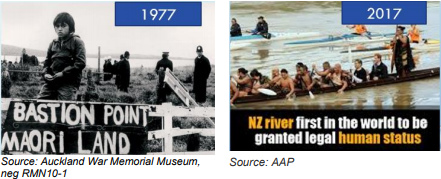
Introduction
Our communities rely on excellent service from very long-lived infrastructure; infrastructure, which will almost certainly outlast not just our careers but probably our lives.
We all enjoy the benefits these assets provide, and we strive to do even better for future generations.
But we have all experienced the deficiencies in asset capacity borne from the difficulties of forecasting a realistic future for the asset sets we manage.
We can look back pretty confidently and see where our predecessors misstepped in their forecasts, and often even identify and understand how and where they went wrong. Such is the advantage of hindsight.
There will be a change in all things: technology, values, and wisdom.
We need to understand this change, embrace it, and plan for it.


My kingdom for a Crystal Ball!
The future is as uncertain now as it always has been, and we have yet to discover that elusive crystal ball!
Waugh Infrastructure Management was fortunate to be invited to assist a client who recognised the limitations of the traditional “existing plus growth” approach.
They allowed us to help them broaden and expand their view of possible futures and forecast solutions for water and wastewater services from this knowledge.
How broad is broad?
Very! Broad is very broad indeed. We accepted that the future was unknown and that the views of future people were equally unknown. Their values, thinking, prioritisation and acceptance will be different and possibly quite different.
It’s difficult, but it must be done
The only certainty with a forecast into the distant future is that it will be wrong. Increased knowledge and the combined wisdom of multiple parties was our way to minimise how wrong we would be.
We managed this through collaboration with multiple parties from District and Regional Councils, various Ministries, business and iwi groups, and ultimately scenario development.
The collaboration was supported by research into various legislative instruments, policies and guidance with a focus on the intention rather than the specific application of detail.
“Wisdom is not what comes from reading great books. When it comes to understanding life, experiential learning is the only worthwhile kind, everything else is hearsay” – Joan Erikson

And we learnt and learnt a lot
We became acutely aware of the community’s needs and how the water and wastewater services contributed to meeting those needs.
The needs:
- Public Health,
- Culture and Traditions,
- Ecology and
- Future Needs and Risk,
While not ground-breaking, we are no longer disconnected from our worldview and now form a meaningful basis for decision-making.
We more confidently understand where new, different or improved services are likely to be needed and, most importantly, why they will be needed.
And we are not finished yet
Armed with collaboratively developed, understood and agreed Needs and Contributions, the detailed work begins.
Analysis of the District aligning the Needs and Contributions to the community’s unique structure and environment will enable a matrix of solution scenarios to be developed and compared.

